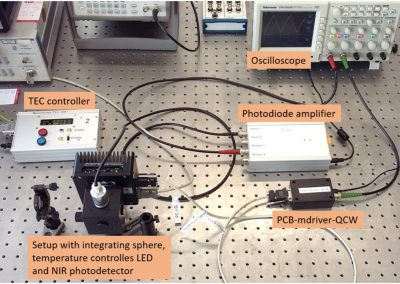
Determination of blood alcohol concentration (BAC) is needed in a multitude of situations, including driving under the influence (DUI), workplace drug monitoring, probation investigations. The term “driving under the influence” is used to describe the impairment of driver’s ability to operate a motor vehicle safely. DUI is characterized as one of the most important situation of Alcohol effects that records thousand deaths per year. Cyprus had the worst performance in EU regarding the average annual percentage change in the number of road deaths over 2001-2010 period, with a staggering 18% increase compared to an average EU decrease of 2.3% . For this reason, the development of methods and products for detecting alcohol consumption by drivers, is of major importance, leading the driver to a conscious decision of not driving under alcohol influence.
IREDA is a national funded DIDAKTOR program (POST-DOC/0718/0186) under the ‘RESTART 2016-2020’ funding grands of the ‘Research & Promotion Foundation’, that aims to create a portable blood alcohol concentration (BAC) detection prototype device, by advancing the state-of-the-art in non-invasive infrared optoelectronic sensing. The project implementation will provide the technological basis for future CyRIC products that help alleviate the critical socioeconomic problem of DUI, a problem particularly evident in Cyprus where alcohol-attributed road deaths had the highest increase in Europe during the last decade.
The project is co-funded by the Republic of Cyprus and European Regional Development Fund (ERDF) via Research and Innovation Foundation’s project number POST-DOC/0718/0186

- Baer M, Schmauss B, Demosthenous P. D3. 2 Simultaneous Signal Acquisition by Synchronous Detection of Orthogonal Frequency Components. SMSI 2021-Measurement Science. 3-6 May 2021.
- P.Demosthenous, M. Baer, Near Infrared diffused reflectance on tissue simulating phantoms for optical applications, OPAL 2022, Tenerife, Spain, 18-20 May 2022.
- P.Demosthenous, M. Baer, Infrared spectroscopic application using an integrating sphere for measuring vapor Ethanol, OPAL 2022, Tenerife, Spain, 18-20 May 2022.
- P.Demosthenous, K. Erotokritou, M. Sergidis, ‘Performance Evaluation of IREDA prototype system: an IR-based Portable Electronic Detection System for Blood Alcohol Concentration’, PHOTOPTICS 2023, Lisbon, Portugal, 16-18 February 2023.








